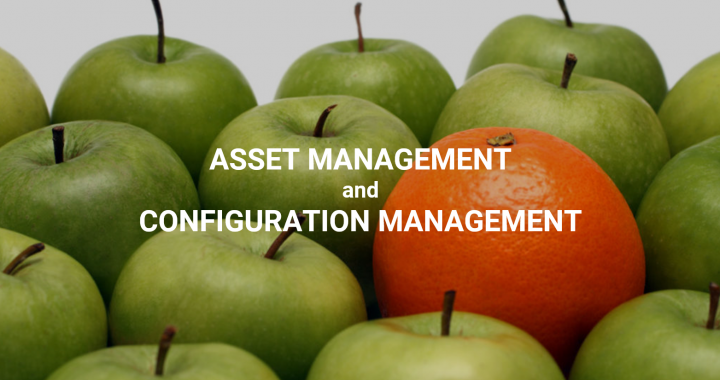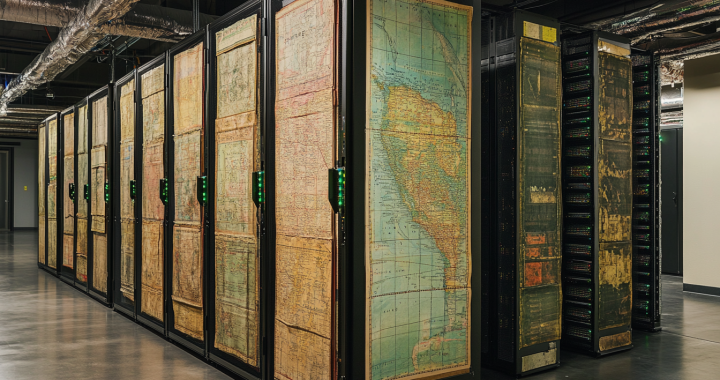When you’re running an IT organization, it’s not just the business that you have to take care of. One part of running a business is building, creating, and providing what your customers need. The other part is management. Out of all the things you have to manage, configurations and assets are two of the most important.
Although people often think of configuration management and asset management as the same thing, but they are different. People also sometimes confuse these terms with each other. So, in this post, I’ll explain what configuration management and asset management are and how they’re different. Let’s start by understanding each of these terms.
What Is Configuration Management?
Configuration management is the management of configuration items. So, what are configuration items?
Configuration Items
Any organization provides certain services. These services might be the ones being provided to customers or to internal users. Either way, creating and providing these services requires some components. So, any component that needs to be managed to deliver services is called a “configuration item.”
Too confusing? No worries—I’ll explain with an example. Consider that you’re providing a service that tracks an organization’s user data. In this case, you can consider the software to be the component that needs to be managed. It’s important that you manage this software to make sure your service works fine. This means that your software is a configuration item. Another way of defining a configuration item is that it’s a component that’s subject to change to make the service delivery better.
What Information Is to Be Managed?
When you manage the attributes of such configuration items, that’s configuration management. So, what kind of information do you have to manage? You have to manage attributes such as ownership, versioning, licensing, and types. Let’s consider an example in which you’re using software for internal tasks.
Now you’ve identified that the software that provides service is your configuration item. The next step is to manage information related to that software. The software developer will have released different versions of the software with updates and new features. You obviously look out for better versions of the software or the version that best suits your requirements. One piece of information that you have to manage is the details of the software versions.
Another example is when you’re using licensed software. The software will be licensed to a particular person or company, and the license will be valid for a certain period of time. Such information becomes the attribute you have to manage. Now that you know what configuration management is, let me tell you a little about how it’s done.
Configuration Management Database
An easy way to manage information on configuration items is by using a configuration management database (CMDB). A configuration management database is just like any other database that stores data, but it specifically stores information related to configuration items.
Configuration Management System
Configuration management isn’t easy. You have to take care of lots of tasks, such as tracking the data and adding and modifying configuration items. To make configuration management easy, you can use a configuration management system (CMS), which is software that helps you manage your configuration items. A typical CMS provides functions for storing and managing CI data, auditing configuration, making changes to the configurations, and so on.
Now that you know what configuration management is, let’s talk about asset management.
Asset Management
In generic terms, anything that’s useful is an asset. If you own a house or a property, that’s an asset for you. So is your car or your phone. When it comes to an organization, anything that’s useful to the organization is an asset. Assets can be capital, office property, the servers locked in your highly secured server room, and so on. But IT assets aren’t limited to physical or material things. The knowledge stored in your employees’ brains is also a valuable asset to your organization.
So, basically, tracking and managing the assets of your organization throughout its life cycle is asset management. The main aim of asset management is to create processes and strategies that help in managing assets properly. The asset management process starts right from the moment of acquiring the asset until disposing of the asset.
For example, let’s say you have an organization that builds and manages web applications. As part of this, you own some servers that you host the web applications on. You also have some databases where you store data for your clients. In this case, your asset management process starts from the time you bought the servers and the databases. You have to manage the buying, maintenance, and inventory costs. Along with that, you also have to take care of regular updates, audits, security implementations, and any changes that you make. This asset management goes on either until the assets are damaged or until they stop being useful to your organization and are disposed.
Asset management directly involves finance. You have to consider the inventory, governance, and regulatory compliance along with the financial aspects in asset management.
Why Do You Need Asset Management?
Asset management helps you understand your financial flow and how to efficiently plan your finances. You can easily track your asset throughout its life cycle. This helps you analyze incidents if something went wrong. Management of assets improves your assets’ quality and performance, which helps your business.
The asset management process helps you stay compliant with various rules and regulations. This improves the quality of your business and also saves you money on audits and fines. Because asset management lets you track your assets, you can plan more efficient strategies for operations.
Configuration Management vs. Asset Management
Now that I’ve explained each of these terms, I hope you understand what they mean. At some point, you might have felt that they were the same. To eliminate any lingering confusion, let me highlight the differences between them.
Asset management is managing anything valuable to your organization. You can consider configuration management to be part of asset management. Configuration management mainly focuses on managing configuration items and their attributes. These attributes mainly affect the delivery of the service.
In the case of asset management, it’s more of a financial perspective. You track the asset to understand the financial flow and need for that asset throughout its life cycle.
To understand the difference, let’s take an example of a hardware component that you’re using—let’s say, a database. When you’re using a database, the database itself becomes an asset. You have to manage the maintenance, track the asset, conduct audits, and so on. This is asset management. The same database will have software versions. Keeping track of the software version, updating it, and tracking which other components it works with becomes part of configuration management.
Configuration management and asset management might sound the same at a high level, but they have different purposes and are implemented differently. Understanding such terms with the help of an example really makes it easy to understand the differences, hopefully, the explanations and examples here have helped you.
Author
This post was written by Omkar Hiremath. Omkar uses his BE in computer science to share theoretical and demo-based learning on various areas of technology, like ethical hacking, Python, blockchain, and Hadoop.



